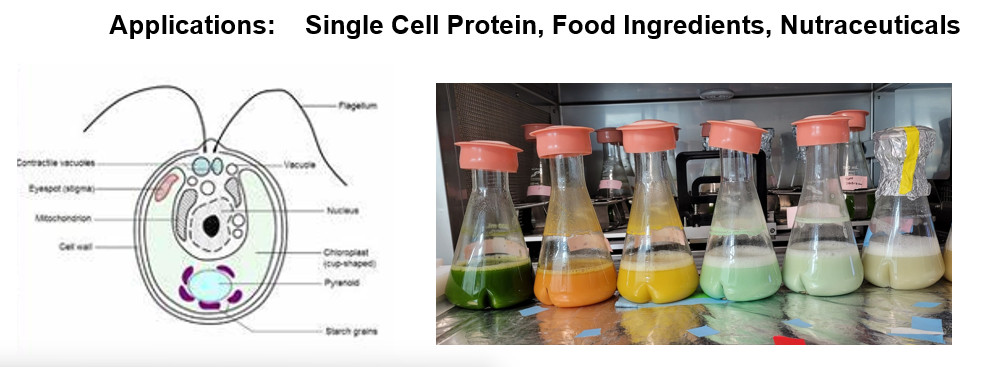(176c) Strain Development and Fermentation of Chlorophyll Deficient Mutant Chlamydomonas Strains As a Neutral Phenotype for Nutritional Drink and Food Applications
AIChE Annual Meeting
2024
2024 AIChE Annual Meeting
Food, Pharmaceutical & Bioengineering Division
Poster session: Food and Bioprocess Engineering
Monday, October 28, 2024 - 3:30pm to 5:00pm
This presentation focuses on development of chlorophyll deficient low fluorescence strains (off white color) that have been selected through screening and presents laboratory and pilot scale up test data. The general problems growing Chlamydomonas species in the past is low titer and long cycle times. For this work, the pilot plant and fermentation equipment were designed to be more efficient for successful microalgal fermentation and therefor slower growing organisms. This includes the upstream and downstream units and off-line analytical that is critical to process measurement of media and process control. The growth behavior of chlorophyll deficient mutant strains on different carbon sources acetate and glucose will be compared and the implications for process operation and control discussed. Data is also compared with parent green strains. The control of pH and dissolved oxygen as well as testing of different substrate feed strategies will be examined. The effect of the nitrogen source and feeding approach of this nutrient component on the process performance will also be examined. Significant progress has been made in media formulation and the ability to achieve high titers of Chlamydomonas cell mass and productivity using non-complex media and defined recipes. Relevant growth, productivity and substrate consumption data will be presented for the key chlorophyll deficient strains as a function of control and strategies employed. Fermentation titers consistent with the best evolved green strains in the lab have been demonstrated and with similar productivities. The current state of the art for chlorophyll deficient Chlamydomonas fermentations is greatly improved over previous research with Chlamydomonas green strains and consistent with other white mutant species. It is possible to grow improved white strains in fermentors using similar methods employed for more commonly fermented organisms. Aside from the color attribute of the dried cell mass another important product trait is taste. Some test strains can reduce the downstream processing requirements and hence production costs which is very important for commercialization. How cells react to drying is another important consideration.
